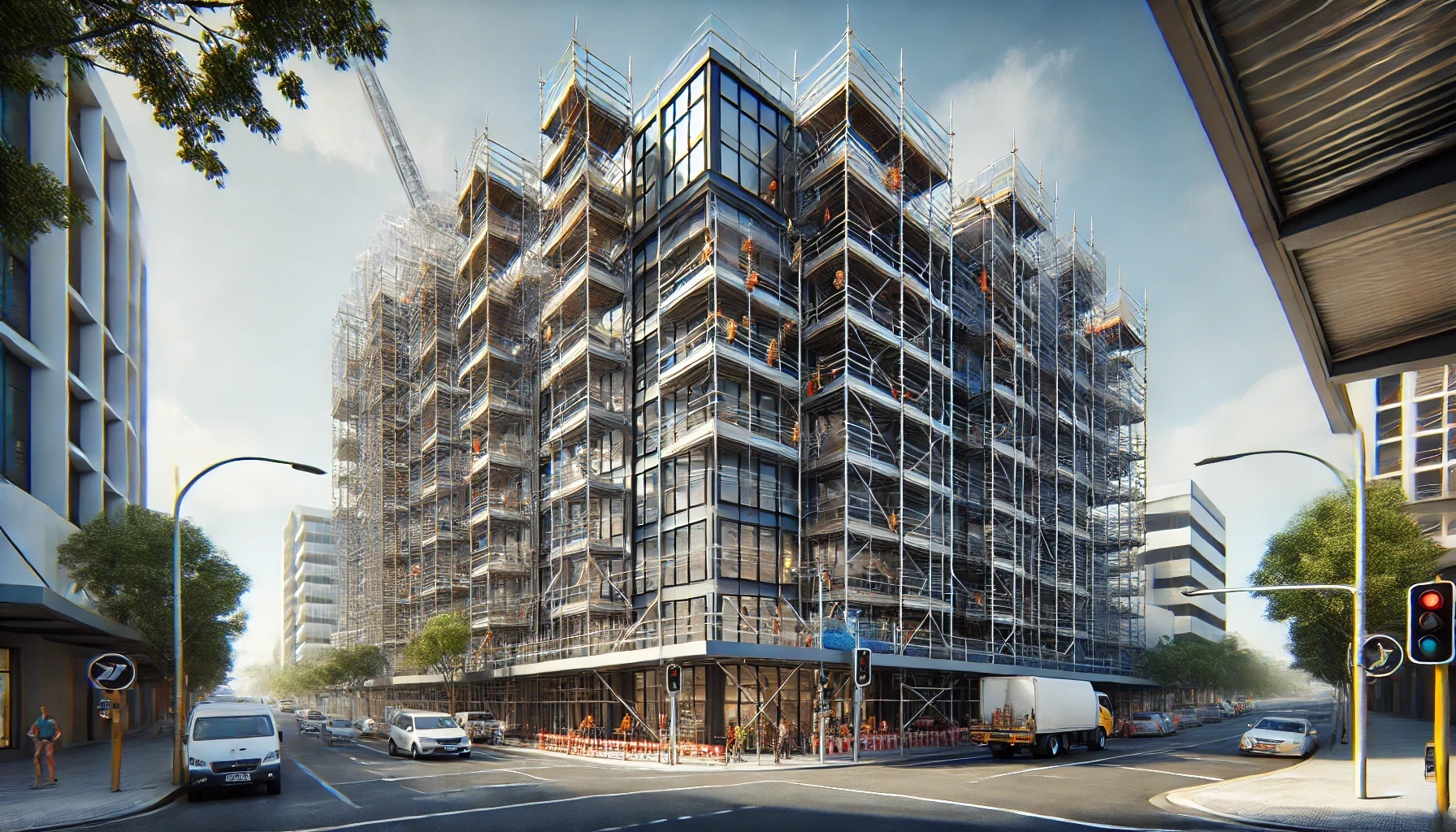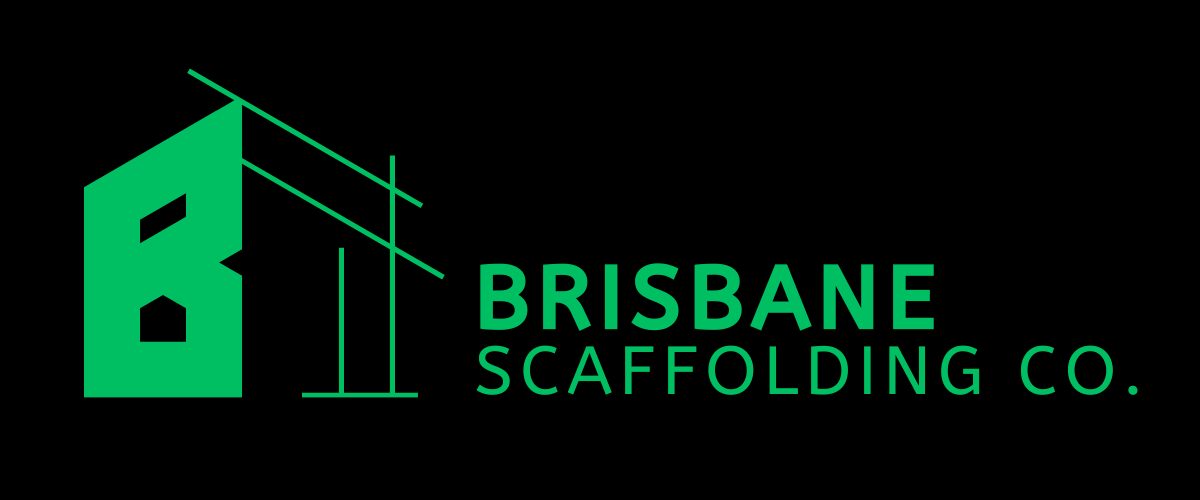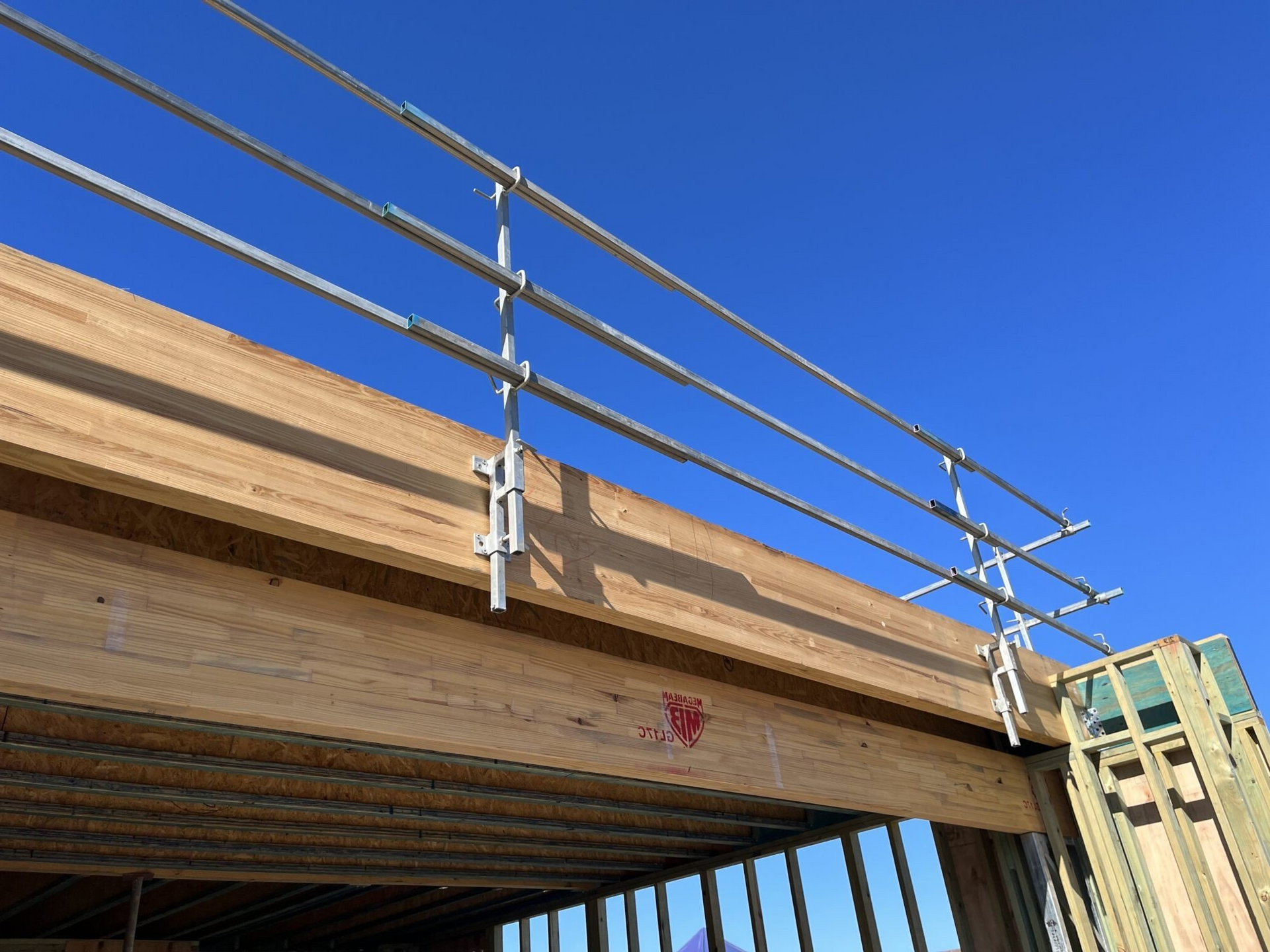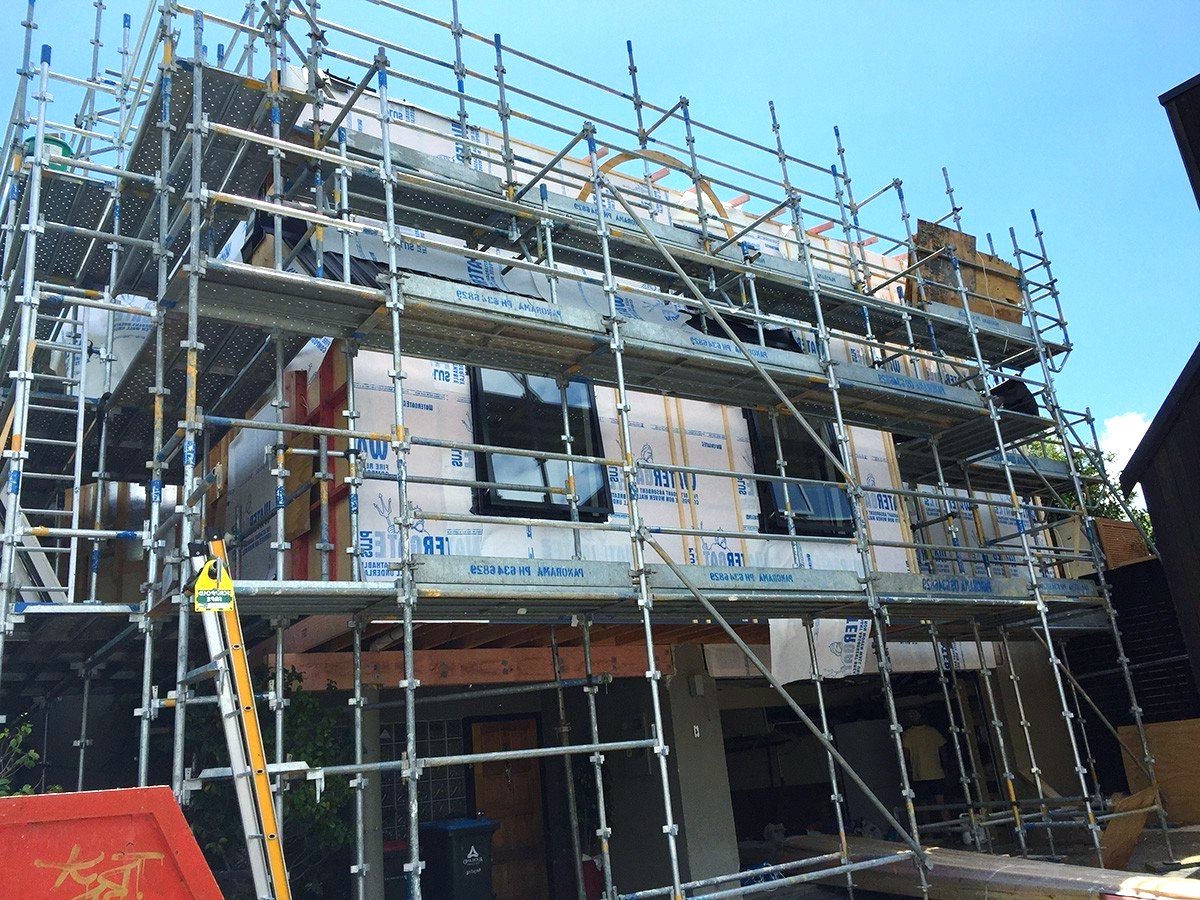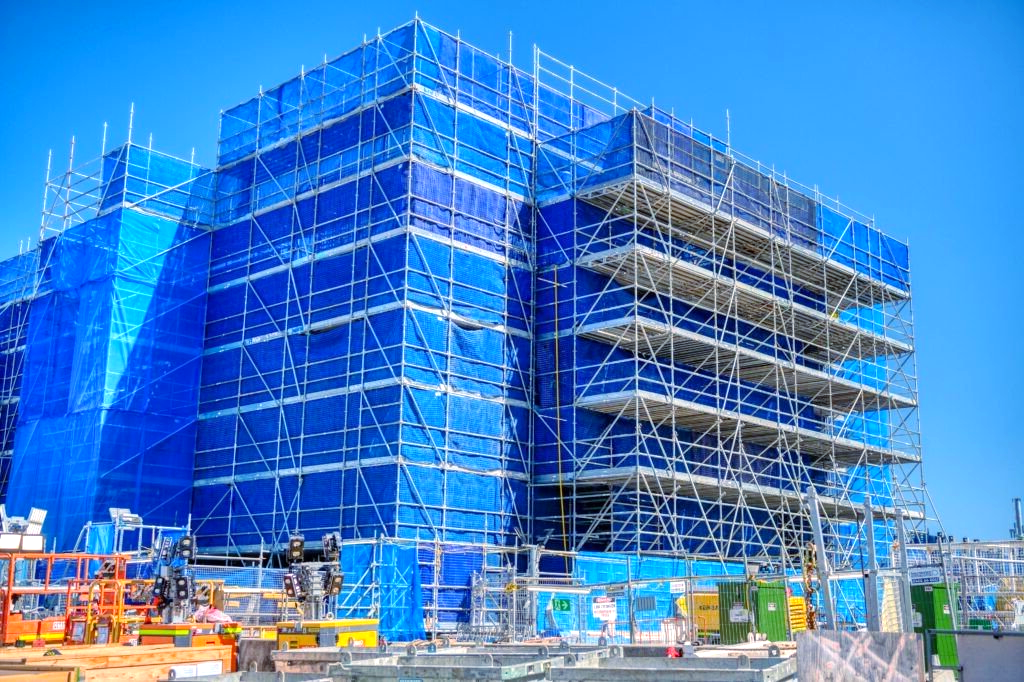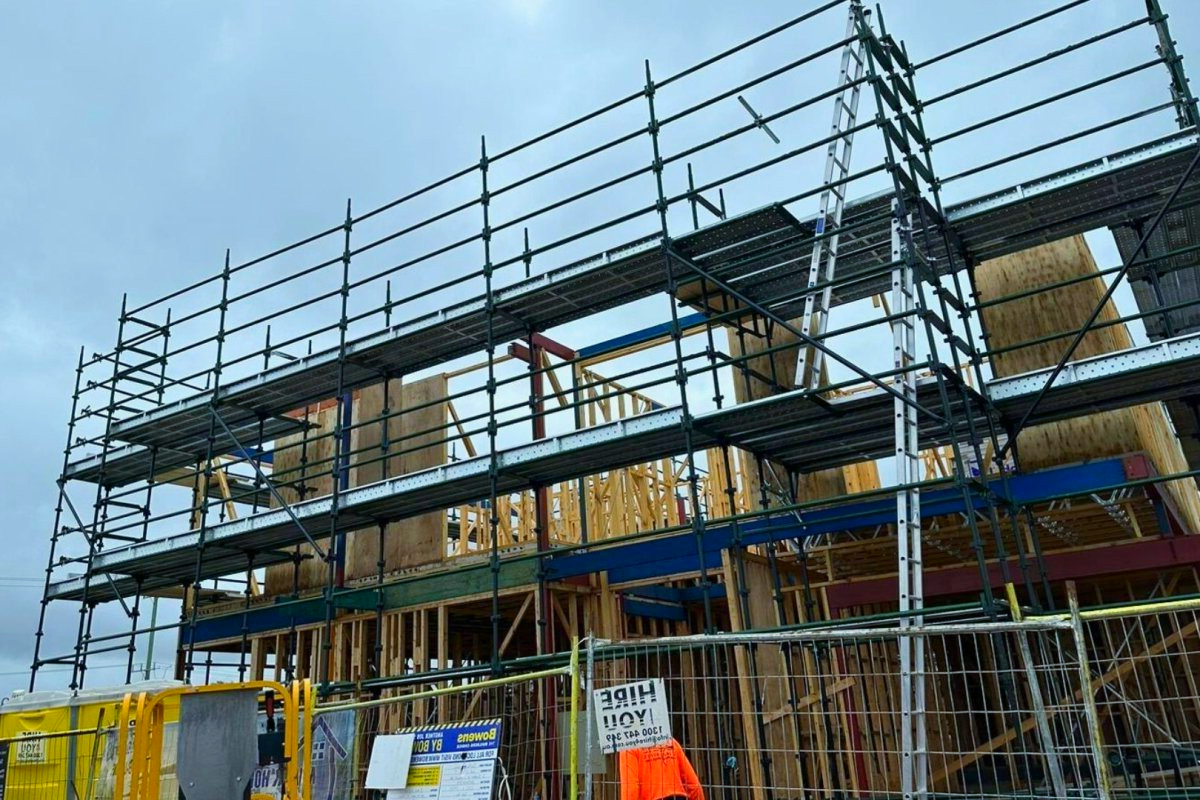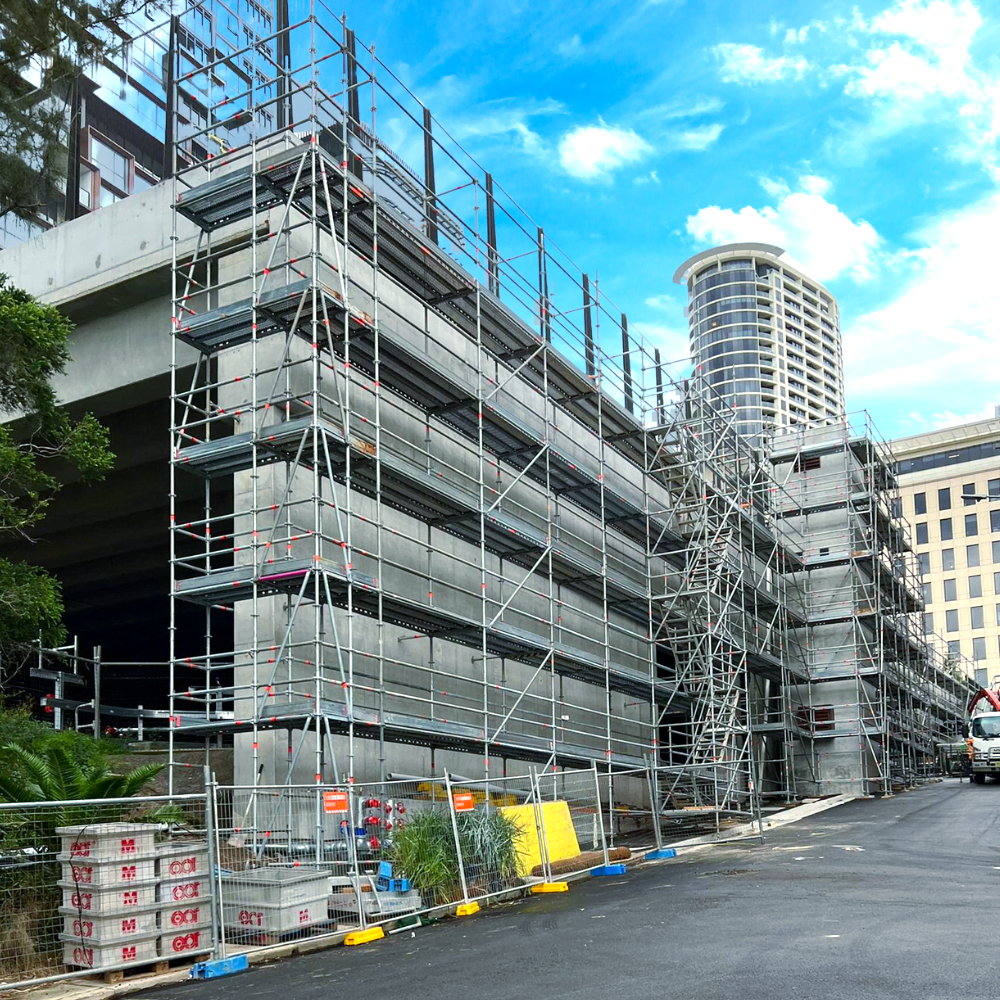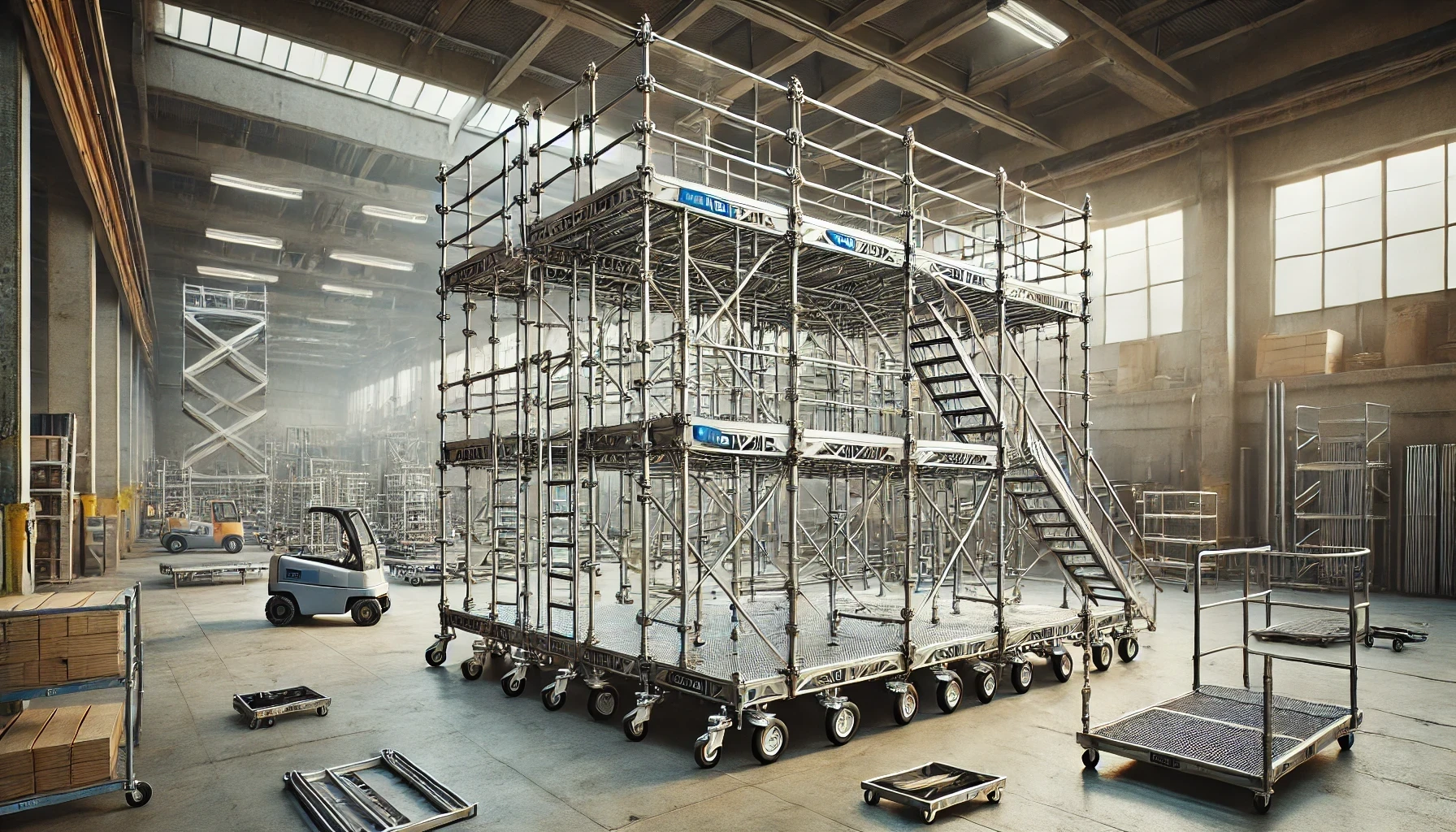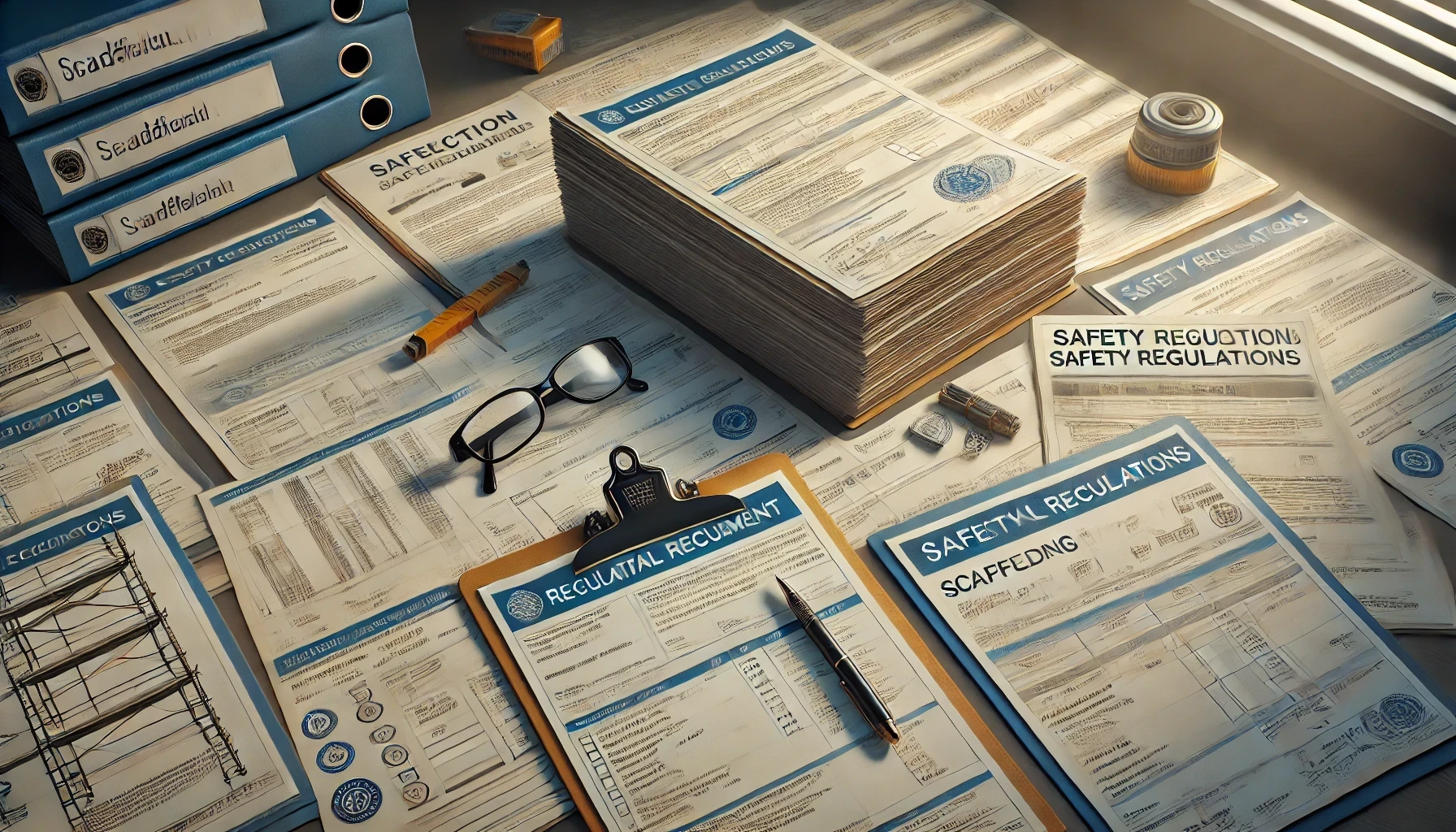The Pros and Cons of Steel vs Aluminium Scaffolding Hire
When it comes to construction and renovation projects in Brisbane's dynamic building sector, choosing the right scaffolding material can significantly impact project outcomes and costs. Both steel and aluminium scaffolding options from Brisbane Scaffolding Co. offer distinct advantages and limitations that need careful consideration before making your selection.
We've seen numerous construction projects across Brisbane benefit from different scaffolding materials based on their specific requirements. Steel has long dominated the industry as a traditional choice, while aluminium has emerged as a popular alternative for its unique properties.
The Queensland climate and varied construction demands make selecting appropriate scaffolding materials crucial for project success. From residential renovations to commercial developments, the choice between steel and aluminium scaffolding affects safety, efficiency, and project timelines.
Key Takeaways
- The choice between steel and aluminium scaffolding directly impacts project costs and efficiency
- Steel offers superior strength and stability for heavy-duty construction projects
- Aluminium provides lightweight versatility ideal for smaller residential jobs
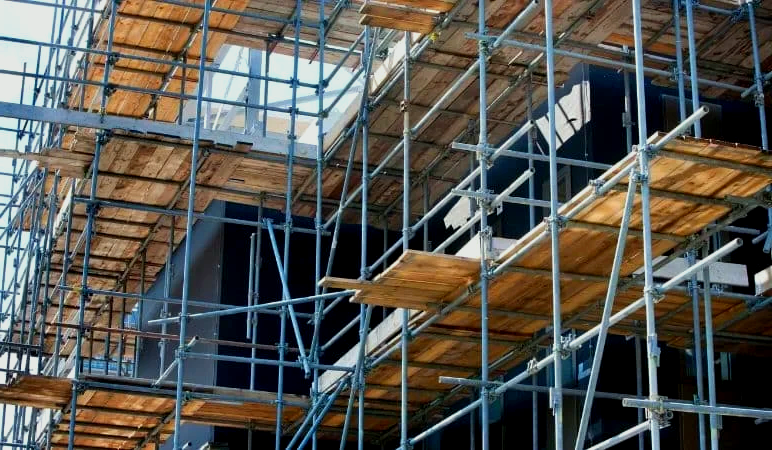
Key Differences Between Steel and Aluminium Scaffolding
Steel and aluminium scaffolding each offer distinct characteristics that make them suited for different applications.
The materials differ substantially in their physical properties, performance capabilities, and maintenance requirements.
Weight and Handling
Aluminium scaffolding weighs approximately one-third of equivalent steel scaffolding components. A standard 2-metre aluminium frame weighs 7kg compared to 21kg for steel.
This significant weight difference means our crews can transport and assemble aluminium scaffolding more quickly and with less physical strain.
Aluminium's lighter weight also reduces transportation costs and allows for easier manual handling on job sites with limited crane access.
Strength and Load Capacity
Steel scaffolding provides superior load-bearing capacity, supporting up to 40% more weight than aluminium equivalents.
Our steel scaffolding can safely handle loads up to 675kg per bay, while aluminium typically maxes out at 450kg per bay.
Steel maintains consistent strength across temperature ranges and shows minimal flex under heavy loads, making it ideal for industrial and high-load applications.
Durability and Corrosion Resistance
Aluminium naturally forms a protective oxide layer, providing excellent corrosion resistance in most environments.
Steel requires regular maintenance and protective coatings to prevent rust, particularly in Brisbane's coastal climate. We galvanise all our steel scaffolding to extend its service life.
Aluminium performs better in marine environments, but steel offers superior fire resistance and maintains structural integrity at higher temperatures.
Our aluminium scaffolding typically lasts 15-20 years with proper care, while well-maintained steel scaffolding can remain in service for 20-25 years.
Advantages and Limitations of Steel Scaffolding in Brisbane
Steel scaffolding remains the most widely used option across Brisbane construction sites due to its proven strength and reliability in demanding conditions.
Advantages of Steel Scaffolding
Steel scaffolding provides exceptional durability with load capacities up to 2,400 kg per platform. This makes it ideal for heavy-duty construction work.
The robust nature of steel means minimal maintenance is required, reducing long-term costs for contractors and hire companies.
Steel scaffolding resists damage from harsh weather conditions common in Brisbane, including intense UV exposure and summer storms.
We've found steel components maintain structural integrity for 15-20 years with proper care, offering excellent value for money.
Limitations of Steel Scaffolding
The weight of steel components requires more workers and time for assembly and disassembly. A standard 6-metre steel frame weighs approximately 23 kg.
Transportation costs run higher due to steel's weight, impacting project budgets for Brisbane sites.
Rust can develop if protective coatings are compromised, particularly in coastal areas near Brisbane where salt exposure is common.
Ideal Applications for Steel
Steel scaffolding excels in demanding mid-rise commercial builds and complex residential projects across Brisbane, where heavier loads and long-term stability are essential. Our steel scaffolding hire service provides the strength and compliance needed for safe, multi-storey construction.
Mining and industrial sites benefit from steel's strength when supporting heavy equipment and materials.
We recommend steel for long-term projects spanning several months, as its durability justifies the initial setup investment.
Bridge maintenance and infrastructure projects rely on steel scaffolding's proven load-bearing capacity and stability in challenging conditions.
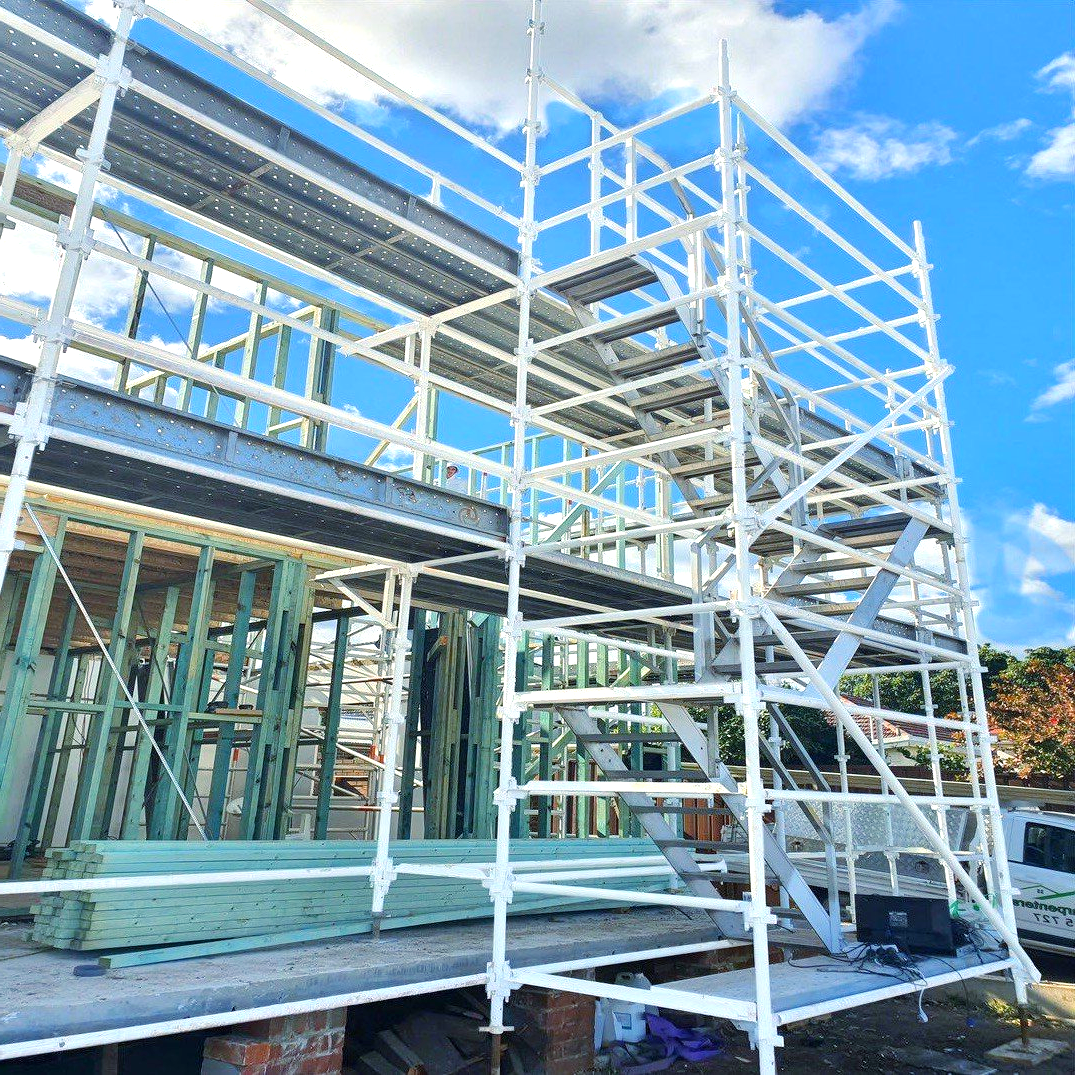
Advantages and Limitations of Aluminium Scaffolding in Brisbane
Aluminium scaffolding offers distinct characteristics that make it suitable for specific construction projects. The lightweight nature and versatility of aluminium scaffolding present unique advantages while also carrying certain limitations that require careful consideration.
Strengths of Aluminium Scaffolding
Aluminium scaffolding weighs approximately 65% less than steel alternatives, making it significantly easier to transport and handle on-site. We can move and assemble these systems with fewer workers, reducing labour costs and setup time.
The non-corrosive properties of aluminium make it perfect for coastal projects in Brisbane's humid climate. Our aluminium scaffolding requires minimal maintenance and doesn't need regular painting or rust protection.
These systems are highly versatile, with modular components that allow quick configuration changes. We can easily adjust the setup for different building shapes and sizes.
The lightweight nature of aluminium scaffolding makes it ideal for projects with weight restrictions or delicate surfaces. It puts less stress on building structures and ground surfaces.
Potential Disadvantages of Aluminium
Aluminium scaffolding has a lower load capacity compared to steel, typically supporting around 225kg per platform versus steel's 675kg capacity. This limits its use for heavy-duty construction work.
The material can be more susceptible to wind forces due to its lighter weight. We need to implement additional securing measures in high-wind conditions.
Cost considerations are important - aluminium scaffolding generally carries a higher initial purchase price than steel alternatives.
The material can suffer from fatigue over time, especially at joint points. Regular inspections are essential to maintain safety standards.
When to Choose Aluminium
Aluminium scaffolding excels in residential projects and light commercial work where quick setup and mobility are priorities. We recommend it for projects under 10 metres in height.
Indoor renovation work benefits from aluminium's clean appearance and ease of manoeuvring through doorways and tight spaces. The system proves invaluable for painting, plastering, and general maintenance tasks.
Projects in coastal areas or environments with high moisture levels are ideal candidates for aluminium scaffolding. The material's natural corrosion resistance ensures longevity without special treatments.
Time-sensitive projects benefit from aluminium's quick assembly features and reduced labour requirements. We can complete setup approximately 40% faster than with steel systems.
How to Select the Right Scaffolding for Your Brisbane Project
Making an informed choice about scaffolding requires careful evaluation of your specific project requirements and site conditions. Safety standards, accessibility needs, and project scope must align with the selected scaffolding solution.
Assessing Site and Project Needs
We recommend starting with a thorough site assessment to determine the most suitable scaffolding type. Key factors include project duration, height requirements, and ground conditions.
Essential considerations:
- Building height and architectural features
- Site access points and restrictions
- Load-bearing requirements
- Project timeline and duration
- Weather exposure and environmental factors
Complex projects like Queenslander renovations need different solutions compared to modern apartment builds. We'll evaluate whether mobile scaffold towers or fixed scaffolding systems better suit your needs.
Safety and Compliance Considerations
Every scaffolding solution must meet Australian Standards AS/NZS 1576 and workplace safety regulations. Our qualified team ensures full compliance across all projects.
Key safety elements:
- Regular equipment inspections
- Current certification documentation
- Appropriate load ratings
- Proper tie-in methods
- Fall protection systems
We maintain detailed safety records and conduct thorough risk assessments for each installation. Our equipment undergoes rigorous testing to exceed safety requirements.
Working with Brisbane Scaffolding Co.
Our experienced team provides comprehensive support throughout your project. We conduct detailed site visits to assess specific requirements and challenges.
We offer:
- Free initial consultations
- Custom scaffolding designs
- Professional installation services
- Regular maintenance checks
- Prompt technical support
Our local knowledge of Brisbane's construction environment helps us deliver solutions that work for your specific location and project type. We maintain a large equipment inventory to accommodate projects of any scale.
